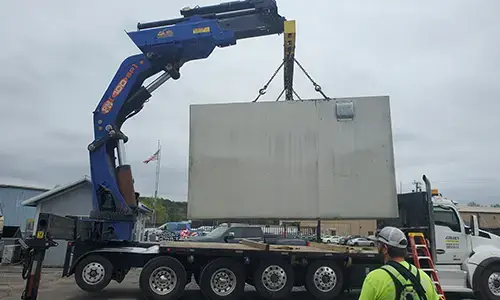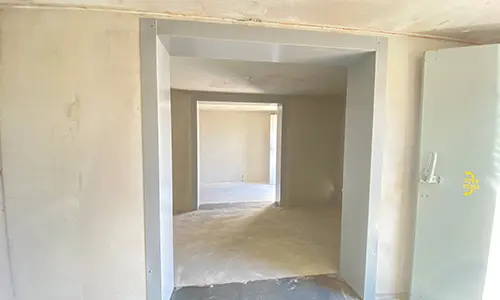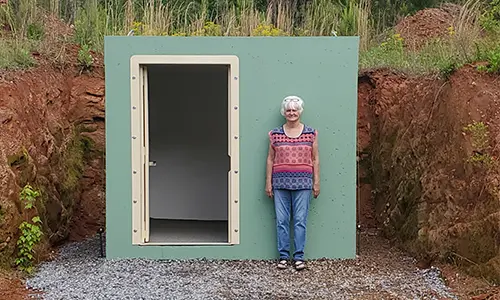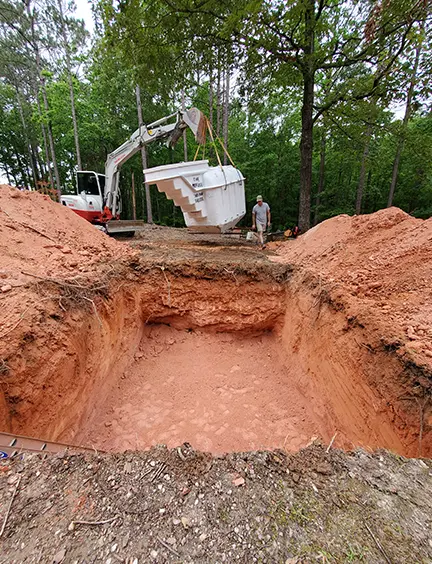Underground Storm Shelters: A Complete Guide to Staying Safe During Severe Weather

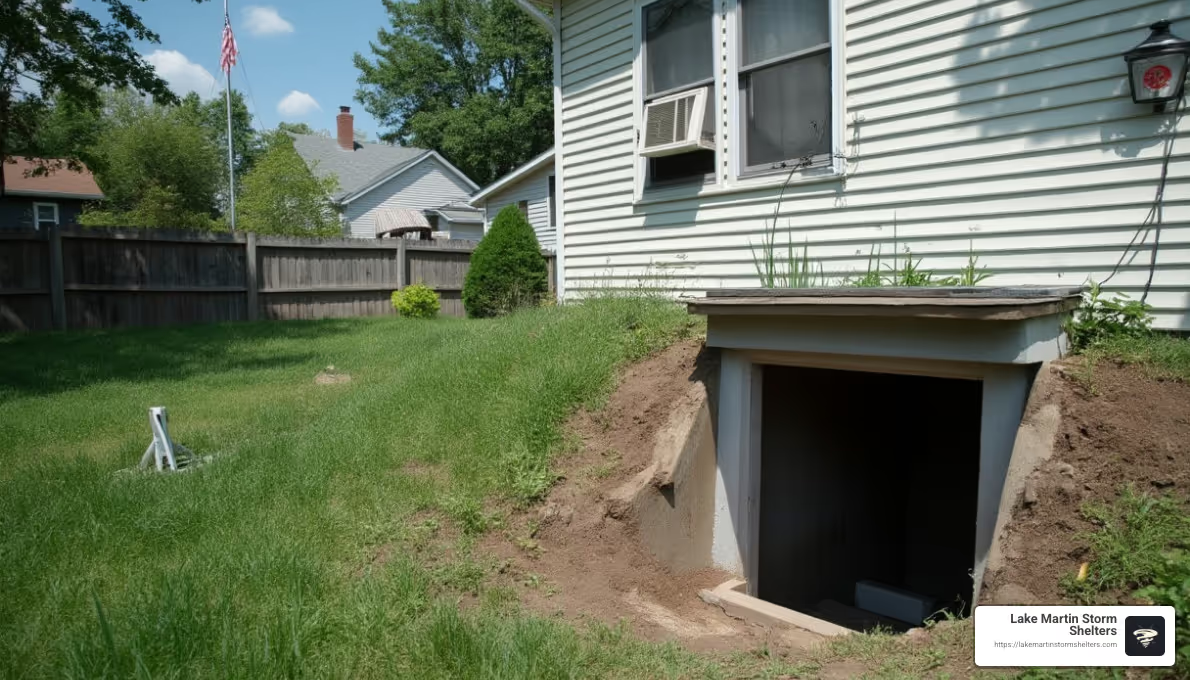
When severe weather strikes—whether it’s a tornado, hurricane, or violent thunderstorm—having a secure place to ride it out is critical. For many families, underground storm shelters (also called storm shelters underground, inground storm shelters, or underground tornado shelters) are the safest choice.
Built below the surface, they provide maximum protection from extreme winds, flying debris, and even the most intense tornadoes.
These shelters are designed to handle nature’s worst, offering peace of mind and a secure place for your family. In this guide, we’ll cover the types of storm shelters, how they’re built, installation tips, costs, and key considerations so you can choose the best solution for your needs.
Key Takeaways
- The role of underground storm shelters in keeping your family safe during severe storms.
- The different types of storm shelters and their materials.
- Installation tips and storm shelter requirements for maximum safety.
- How to calculate storm shelter cost and available financing or incentives.
- Maintenance and comfort tips for long-term use.
Understanding Underground Storm Shelters
When the sky turns dark and the wind begins to roar, knowing you have a secure refuge can make all the difference. Underground storm shelters are specifically designed to protect you and your loved ones from the destructive forces of tornadoes, hurricanes, and other severe weather events. By learning how these shelters work, their construction standards, and why they are essential in storm-prone areas, you can make informed choices that ensure your family’s safety year-round.
What Is a Storm Shelter and Why Do You Need One?
A storm shelter (sometimes called a storm cellar or underground storm bunker) is a reinforced, secure space designed to protect occupants from tornadoes, hurricanes, and other severe weather events. These shelters can be underground storm cellars, crawl space storm shelters, or even prefab underground storm shelters.
Why they matter:
- Built from durable materials including steel, concrete, and fiberglass.
- Engineered to meet or exceed FEMA safety requirements.
- Provide family safety shelters for homes, garages, or yards.
Having one ensures your family has a safe room when the next storm hits.
How Underground Shelters Provide Protection
Below ground storm shelters use the earth as a protective barrier. Being buried shields them from high winds and wind-borne debris. Common designs include:
- Underground concrete storm shelters for long-term durability.
- Steel storm shelters for structural integrity and quick installation.
- Fiberglass underground storm shelters for lightweight, corrosion-resistant solutions.
Doors—often steel storm shelter doors—are designed to resist debris impact. Ventilation, drainage, and waterproofing are key features, especially for waterproof underground storm shelters.
FEMA Standards and NSSA Certification
The Federal Emergency Management Agency (FEMA) establishes strict guidelines for storm shelter construction to ensure maximum protection during severe weather. These standards address factors such as structural integrity, impact resistance, ventilation, and anchoring systems, making sure shelters can withstand extreme winds and flying debris.
In addition, the National Storm Shelter Association (NSSA) provides certification for shelters that meet or exceed these requirements. This certification process verifies that a shelter’s design, materials, and installation methods align with tested safety benchmarks.
When buying a storm shelter, always look for models that are both FEMA-compliant and NSSA-certified to ensure you’re investing in a structure built to provide reliable, long-term protection for you and your family.
Types of Underground Storm Shelters
Choosing the right underground storm shelter is one of the most important decisions for protecting your family during severe weather. These shelters come in various designs and materials, each offering different levels of maximum protection, durability, and comfort.
Whether you’re looking for a storm shelter underground that’s custom-built for your property or a prefab underground storm shelter for quick installation, understanding your options will help you make an informed choice. Below, we break down the most common types—concrete, steel, fiberglass, and modular—so you can compare their strengths, costs, and ideal uses before making your investment in safety.
1. Concrete Storm Shelters
Concrete storm shelters are among the most durable and secure options, built to withstand the most intense severe weather events. These shelters are typically constructed with reinforced storm shelter concrete, which ensures exceptional impact resistance and long-term stability.
- Built with reinforced storm shelter concrete. This material delivers maximum strength and ensures the shelter meets strict storm shelter requirements.
- Can be poured in place or precast. This allows for flexibility depending on site conditions and homeowner preferences.
- Resistant to impact and long-lasting. They stand up to tornadoes, hurricanes, and flying debris for decades.
While the initial cost may be higher, their reliability and structural integrity make them a top choice for families in storm-prone areas.
2. Steel Storm Shelters
Steel storm shelters are widely chosen for their strength, quick installation, and ability to be installed in different locations. They are often prefabricated, making them easier to transport and install than some other types.
- Strong, industry-leading storm shelters that can be above or below ground. Perfect for homes, garages, or commercial properties.
- Prefabricated for quick installation. Minimizes labor costs and ensures faster readiness for severe weather.
- Popular in Texas tornado shelter markets. Their resilience against tornado-force winds and flying debris makes them a trusted choice.
Many feature steel storm shelter doors for added security, and their adaptability makes them suitable for a variety of storm protection needs.
3. Fiberglass Underground Storm Shelters
Fiberglass underground storm shelters are valued for being lightweight, corrosion-resistant, and cost-effective. Their material composition makes them especially useful in humid or flood-prone regions.
- Lightweight and corrosion-resistant. Easy to install and ideal for damp climates.
- Ideal for underground fiberglass tornado shelters in humid climates. Maintains durability without rusting or rotting.
- Meets FEMA storm shelter construction standards. Ensures reliable safety during tornadoes and severe storms.
These shelters have smooth interiors for easy cleaning, and because fiberglass is resistant to cracking or warping, they require minimal upkeep, offering years of dependable storm protection.
4. Modular & Prefab Storm Shelters
Modular tornado shelters and prefab underground storm shelters combine affordability with convenience. They are factory-built, then transported to your site for quick assembly.
- Modular tornado shelters or prefab underground storm shelters are cost-effective and fast to install.
- Can be customized for bench seating, lighting, or storage. Enhances comfort and functionality during extended stays.
- Available in concrete, steel, or fiberglass. Offers flexibility to match climate and budget.
These shelters can be scaled to accommodate growing families and are a great choice for homeowners who want reliable storm shelters without a lengthy construction process.
Choosing the Right Shelter for Your Home
When deciding on an underground safety shelter, consider:
- Capacity – Determine how many people the shelter must protect, including family, guests, and pets. A properly sized in ground storm shelter should allow everyone to sit or stand comfortably. Planning for future needs, like a growing family, ensures your shelter remains functional for years without requiring costly modifications.
- Accessibility – Decide between stairs, ramps, or both, especially if you have elderly or disabled family members. Easy access to underground garage storm shelters or backyard shelters can save critical seconds during emergencies. A design with wide entryways, sturdy handrails, and well-lit passages improves safety for everyone, regardless of age or mobility.
- Location – Choose a safe, convenient installation site, whether in your backyard, garage, or indoors. Below ground storm shelters should be close to your home for quick access, but also placed where drainage issues won’t cause flooding. Consider soil type, property layout, and local storm shelter installation regulations when finalizing the location.
- Features – Look for custom-built shelters with comfort and safety enhancements, such as ventilation systems, bench seating, emergency lighting, and communication devices. These additions transform an underground shelter from a bare safety zone into a secure, livable space. The goal is to ensure your family stays safe while also feeling comfortable during extended stays.
- Materials – Select from concrete, steel, or fiberglass based on your climate, soil conditions, and budget. Concrete underground storm shelters are known for durability, steel offers strength with quick installation, and fiberglass provides lightweight, corrosion-resistant protection. Choosing the right material ensures structural integrity, long-term performance, and peace of mind in severe weather conditions.
Storm Shelter Installation
Installing an underground storm shelter is more than just digging a hole and placing the unit—it’s a process that requires planning, precision, and adherence to safety standards. The right installation ensures your shelter remains secure, watertight, and structurally sound for years to come.
From choosing the ideal site to completing the final touches, every step impacts the shelter’s ability to protect your family during severe weather. Whether you opt for a buried storm shelter, in ground storm shelter, or underground tornado shelter, working with experienced professionals can make the difference between a reliable safe haven and a costly mistake.
Site Selection
Choosing the right site is critical for the long-term performance and safety of your underground storm shelter. A poorly chosen location can lead to drainage issues, accessibility problems, or installation delays.
- Choose a spot with good drainage (avoiding leaks in your buried storm shelter). This helps prevent water intrusion, especially in heavy rain.
- Ensure no underground utilities are in the way. Call utility location services before any digging begins.
- Close enough to your home for quick access. This ensures your family can enter the shelter quickly during severe weather.
By evaluating soil type, terrain, and proximity to your home, you can select the safest and most practical location.
Installation Process
Installing a below ground storm shelter requires precision and the right sequence of steps to ensure both safety and compliance with storm shelter requirements.
- Excavation – Prepare the ground. Dig a hole large enough to fit the shelter dimensions.
- Placement – Position the shelter securely. Use lifting equipment for proper alignment.
- Utility Connections – Air ventilation, lighting. Maintain airflow and visibility inside.
- Backfilling – Secure with dirt and compact. Prevent shifting during severe storms.
- Finishing Touches – Door installation, waterproofing, interior setup. Complete all safety and comfort features.
While DIY is possible, professional storm shelter installation ensures the work meets FEMA guidelines and local building codes.
Cost of Underground Storm Shelters
Investing in an underground storm shelter is a major step toward ensuring your family’s safety during severe weather, but understanding the costs involved is essential before you buy. Prices can vary widely depending on whether you choose a concrete tornado shelter, steel storm shelter, or fiberglass underground storm shelter, as well as the size, location, and installation requirements.
Beyond the initial purchase, factors like custom features, soil conditions, and local building codes can influence your total expenses. Fortunately, federal and state programs—such as the federal tax credit for storm shelters and Texas tornado shelter rebates 2025—can help lower the financial burden, making reliable storm protection more affordable.
Price Ranges
The cost of an underground storm shelter can vary greatly depending on material, size, customization, and installation complexity. Understanding the typical price range helps you budget effectively.
- Concrete tornado shelters Texas: $3,000–$10,000 – Known for durability and long-term value.
- Steel underground storm shelters: $2,000–$8,000 – Offers quick installation and high strength.
- Fiberglass shelters: $1,500–$6,000 – Lightweight, corrosion-resistant, and low maintenance.
If you’re wondering how much to build an underground storm shelter or how much does a bunker cost, remember that factors like soil conditions, accessibility, and added features (ventilation, seating, lighting) also influence the final price.
Incentives
Many homeowners can offset the cost to build a storm shelter through incentives and rebate programs. These options can significantly lower your out-of-pocket expenses.
- Federal tax credit for storm shelters. May apply to qualifying installations that meet FEMA standards.
- Texas tornado shelter rebates 2025 and other local programs. State and community initiatives to encourage storm safety.
- Insurance discounts for reliable storm shelters. Many insurers reward homeowners who invest in certified shelters.
Researching these incentives before purchasing can help reduce costs while ensuring you choose an industry-leading storm shelter that offers both protection and value.
Comfort & Maintenance Tips
A storm shelter isn’t just about surviving the immediate danger—it’s also about ensuring you remain comfortable and prepared if you need to stay inside for hours. Proper setup and upkeep can make a big difference, especially during extended severe weather events.
- Add bench seating or foldable chairs. This creates a more comfortable space for your family.
- Store emergency food, water, and tools. Keep enough supplies for at least 72 hours.
- Ensure ventilation to avoid stuffiness. Fresh air circulation is essential for safety and comfort.
- Keep it clean and dry to prevent mold in underground storm cellars. Regular inspections can help maintain a healthy, secure environment.
These simple steps ensure your underground storm shelter remains both safe and livable.
Conclusion
Whether you choose a steel storm shelter, underground concrete storm shelter, or fiberglass underground storm shelter, the right in ground storm shelter can mean the difference between life and death during severe weather.
From storm shelter construction to installation and maintenance, planning ahead ensures your family stays safe. Investing in one now means you’ll feel safe and secure when the next storm comes.
Frequently Asked Questions (FAQ)
1. What is a storm shelter, and how is it different from a storm cellar?
A storm shelter is a reinforced space designed to protect people from extreme weather. A storm cellar underground is a type of storm shelter built below ground level for added protection.
2. How much does a bunker or underground storm shelter cost?
The cost to build a storm shelter varies from $1,500 to $10,000, depending on size, materials, and whether it’s custom-built or prefabricated.
3. Can a tornado pull a shelter out of the ground?
Properly installed below ground storm shelters are anchored to resist uplift forces, making it extremely unlikely for a tornado to dislodge them.
4. What are storm shelters made of?
Common materials include concrete, steel, and fiberglass. Underground concrete storm shelters are popular for their durability, while fiberglass shelters resist corrosion.
5. Are there financing or rebate programs for storm shelters?
Yes—options include tornado shelter financing Norman, Texas tornado shelter rebates 2025, and federal tax credit for storm shelters.

